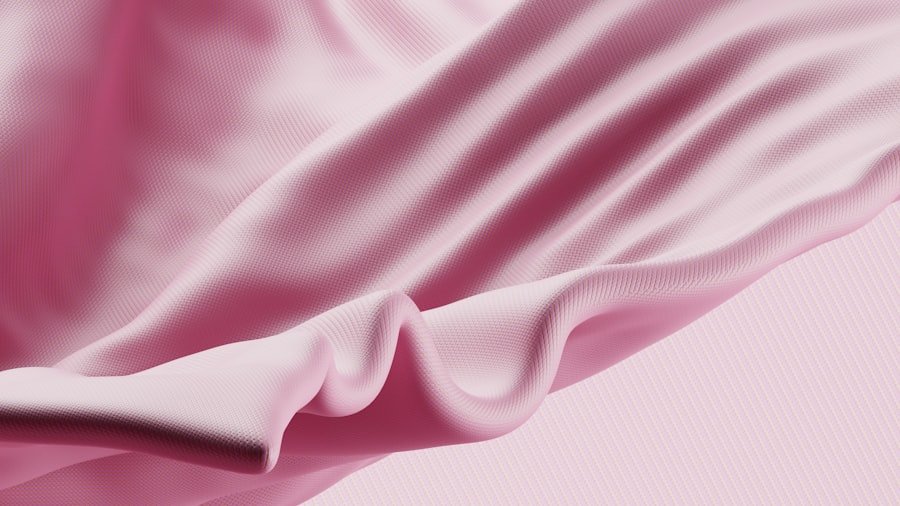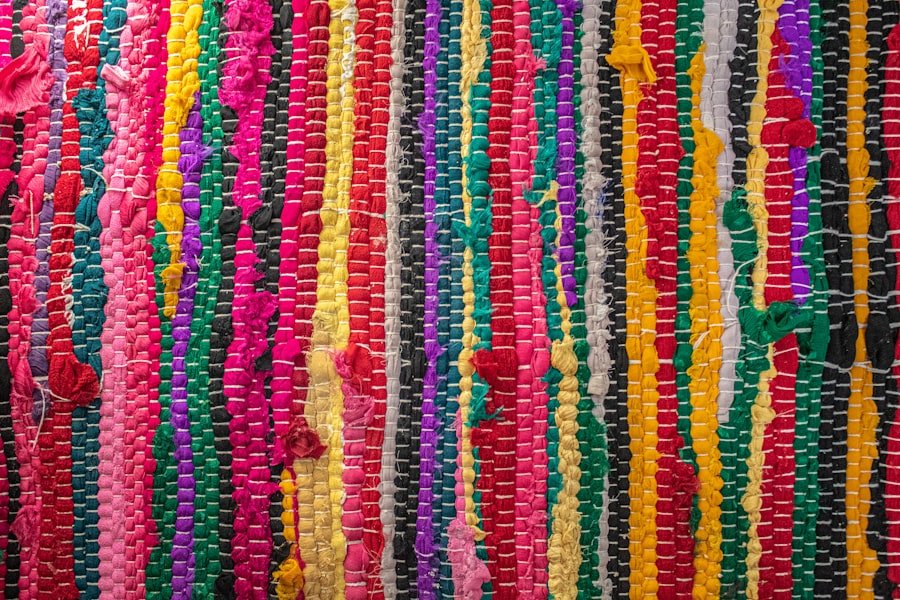This post may contain affiliate links. When you purchase through links on our site, we may earn an affiliate commission.
As I delve into the world of natural dyes, I find myself captivated by the rich tapestry of colors and the stories they tell. Natural dyes, derived from plants, minerals, and insects, offer a sustainable alternative to synthetic dyes that have dominated the textile industry for decades. The allure of these dyes lies not only in their vibrant hues but also in their connection to nature and tradition.
Each color is a reflection of the environment from which it originates, making every dyed fabric a unique piece of art that carries with it the essence of its source. In an age where sustainability is becoming increasingly important, I am drawn to the idea of using natural dyes as a way to reduce our ecological footprint. The process of natural dyeing is not just about achieving a specific color; it is an exploration of the relationship between humans and nature.
By embracing these age-old techniques, I feel a sense of responsibility to honor the traditions of those who came before me while also contributing to a more sustainable future. This journey into natural dyes is not merely a craft; it is a celebration of creativity, history, and environmental consciousness.
Key Takeaways
- Natural dyes are derived from plants, insects, and minerals and have been used for centuries to color fabrics.
- The history of natural dye techniques dates back to ancient civilizations, with techniques evolving over time.
- Types of natural dyes include plant-based dyes like indigo and madder, insect-based dyes like cochineal, and mineral-based dyes like ochre.
- Fabrics must be properly prepared through processes like scouring and mordanting before natural dyeing to ensure color fastness.
- Techniques for natural dyeing include immersion dyeing, tie-dyeing, and eco-printing, each producing unique effects and patterns.
History of Natural Dye Techniques
The Significance of Color in Ancient Societies
From the radiant indigo used in ancient Egypt to the rich cochineal red favored by the Aztecs, natural dyes have played a substantial role in human culture for thousands of years. These early dyeing practices were often closely tied to social status, with certain colors reserved for royalty or religious ceremonies, highlighting the importance of color in societal structures.
Natural Dyes and Spirituality
As I delve deeper into history, I discover that natural dyeing techniques were not only practical but also deeply spiritual. Many cultures believed that the colors derived from nature held magical properties, capable of warding off evil spirits or bringing good fortune. The process of dyeing was often ritualistic, involving specific prayers or offerings to ensure a successful outcome.
A Profound Connection to the Natural World
This connection between dyeing and spirituality resonates with me, as it emphasizes the profound relationship between humans and the natural world. Understanding this historical context enriches my appreciation for natural dyes and inspires me to incorporate these traditions into my own practice.
Types of Natural Dyes and Their Sources

When I think about the types of natural dyes available, I am amazed by the diversity and richness they offer. Each dye source has its own unique characteristics, resulting in a wide spectrum of colors and shades. For instance, indigo, derived from the leaves of the indigo plant, produces deep blues that have been cherished for centuries.
On the other hand, madder root yields warm reds and oranges, while turmeric provides bright yellows that can brighten any fabric. The variety is endless, and each source tells its own story. As I experiment with different natural dye sources, I find joy in discovering new colors and techniques.
For example, I have recently started using avocado pits and skins to create soft pinks and blush tones. This unexpected source not only reduces waste but also adds a personal touch to my dyeing process. Additionally, I am intrigued by the use of mushrooms as a dye source, which can produce earthy tones ranging from browns to vibrant yellows.
The exploration of these diverse sources allows me to connect with nature in a meaningful way while expanding my palette.
Preparing Fabrics for Natural Dyeing
| Fabric Preparation Method | Time Required | Effectiveness |
|---|---|---|
| Scouring | 1-2 hours | High |
| Mordanting | 2-3 hours | High |
| Soy Milk Bath | 4-6 hours | Medium |
Preparing fabrics for natural dyeing is a crucial step that I have come to appreciate deeply. The process begins with selecting the right fabric; natural fibers such as cotton, linen, silk, and wool tend to absorb dyes more effectively than synthetic materials. Once I have chosen my fabric, I focus on pre-treating it to ensure optimal dye uptake.
This often involves scouring the fabric to remove any impurities or finishes that may hinder the dye’s ability to bond with the fibers. After scouring, I typically mordant my fabric using substances like alum or tannin. Mordanting is essential because it helps fix the dye to the fabric, enhancing colorfastness and vibrancy.
As I mix my mordant solution, I feel a sense of anticipation for what colors will emerge from this process. Each step in preparing the fabric is an integral part of the journey, allowing me to engage with the materials on a deeper level. The transformation from plain fabric to a canvas ready for color is both exciting and rewarding.
Techniques for Natural Dyeing
As I dive into various techniques for natural dyeing, I find that there are numerous methods to explore, each offering its own unique results. One technique that has captured my interest is immersion dyeing, where I submerge my prepared fabric in a dye bath made from my chosen natural dye source. This method allows for even color distribution and can produce stunning results when done correctly.
The anticipation builds as I watch the fabric transform in front of my eyes, absorbing the vibrant hues. Another technique that intrigues me is tie-dyeing or shibori, which involves folding, twisting, or binding the fabric before dyeing it. This method creates beautiful patterns and textures that are often unexpected and delightful.
As I experiment with different folding techniques and resist methods, I am constantly surprised by the outcomes. Each piece becomes a unique work of art that reflects my creativity and experimentation. The joy of discovering new patterns through this technique adds an element of surprise to my dyeing process.
Achieving Different Colors and Effects

Achieving different colors and effects through natural dyeing is an exhilarating aspect of this craft that keeps me coming back for more. By varying factors such as dye concentration, temperature, and time spent in the dye bath, I can manipulate the final color outcome significantly. For instance, when dyeing with indigo, I have learned that multiple dips in the dye bath can deepen the blue hue dramatically.
Each dip reveals a new layer of color that adds depth and richness to my fabric. Additionally, I enjoy experimenting with layering colors to create complex shades and effects. By over-dyeing previously dyed fabrics with different colors, I can achieve stunning results that are both intricate and unique.
For example, layering yellow from turmeric over blue indigo can yield beautiful greens that are reminiscent of lush landscapes. This exploration of color mixing allows me to express my creativity while also embracing the unpredictability inherent in natural dyeing.
Fixing and Caring for Natural Dyed Fabrics
Once I have achieved my desired colors through natural dyeing, fixing and caring for these fabrics becomes paramount to preserving their beauty. The first step in this process is rinsing the dyed fabric thoroughly to remove any excess dye that may bleed during washing. This careful rinsing ensures that my colors remain vibrant and true over time.
After rinsing, I often choose to set the colors using a vinegar or salt solution, which can help enhance colorfastness. Caring for natural dyed fabrics requires a gentle touch; I have learned that hand washing in cold water with mild soap is often best to maintain their integrity. Avoiding harsh chemicals or bleach is crucial since these can strip away the beautiful colors I’ve worked so hard to achieve.
Instead, I opt for natural detergents that are gentle on both my fabrics and the environment. By treating my dyed textiles with care, I can enjoy their beauty for years to come while also honoring the natural processes that brought them to life.
Exploring Modern Applications of Natural Dye Techniques
In recent years, there has been a resurgence of interest in natural dye techniques within contemporary fashion and textile design. As I explore this modern landscape, I am inspired by how designers are incorporating these age-old practices into their work while promoting sustainability and ethical production methods. Many brands are now prioritizing transparency in their supply chains and opting for natural dyes as a way to reduce their environmental impact.
Moreover, I find it exciting how artists and makers are pushing the boundaries of traditional natural dyeing techniques by experimenting with innovative applications such as eco-printing or using food waste as dye sources. This creative exploration not only breathes new life into natural dyes but also encourages a dialogue about sustainability in our modern world. As I engage with these contemporary practices, I feel empowered to contribute my voice to this movement while continuing to honor the rich history behind natural dyes.
In conclusion, my journey into the world of natural dyes has been one filled with discovery and connection to both history and nature. From understanding ancient techniques to exploring modern applications, each step has deepened my appreciation for this craft. As I continue to experiment with different sources and methods, I am reminded of the beauty that lies in sustainability and creativity intertwined—a journey that is as colorful as the dyes themselves.
If you’re interested in experimenting with natural dye techniques for fabrics, you may also enjoy reading about creating your personal oasis in a guide to cozy living. This article from A to Z Cozy Corner offers tips and ideas for transforming your living space into a warm and inviting sanctuary. Check it out here.
FAQs
What are natural dyes?
Natural dyes are dyes derived from plants, insects, and minerals. They are a sustainable and eco-friendly alternative to synthetic dyes, and have been used for centuries to color fabrics and textiles.
What are some common sources of natural dyes?
Common sources of natural dyes include plants such as indigo, madder, turmeric, and onion skins, as well as insects like cochineal. Other sources include minerals like iron and copper, which can be used to create natural dye colors.
What are the benefits of using natural dyes for fabrics?
Using natural dyes for fabrics has several benefits, including being environmentally friendly, non-toxic, and biodegradable. Natural dyes also have the potential to create unique and beautiful colors that are not easily replicated with synthetic dyes.
What are some techniques for using natural dyes on fabrics?
Some common techniques for using natural dyes on fabrics include immersion dyeing, where the fabric is submerged in a dye bath, and resist dyeing, where certain parts of the fabric are protected from the dye. Other techniques include eco-printing, where plant materials are used to create patterns on the fabric, and shibori, a Japanese tie-dyeing technique.
Are there any challenges associated with using natural dyes for fabrics?
While natural dyes offer many benefits, there are also some challenges associated with using them. These can include variations in color and consistency, as well as the need for mordants to help the dye adhere to the fabric. Additionally, some natural dyes may be less colorfast than synthetic dyes, requiring special care when washing and caring for dyed fabrics.

 using WordPress and
using WordPress and 
No responses yet